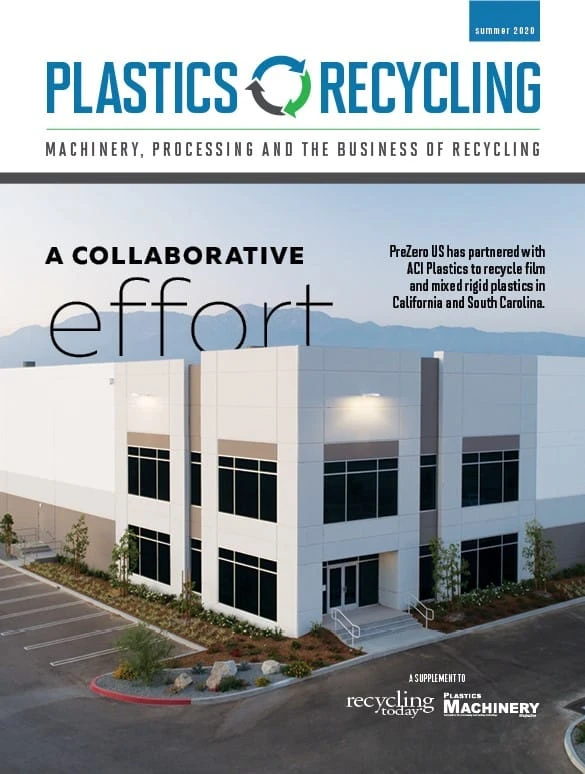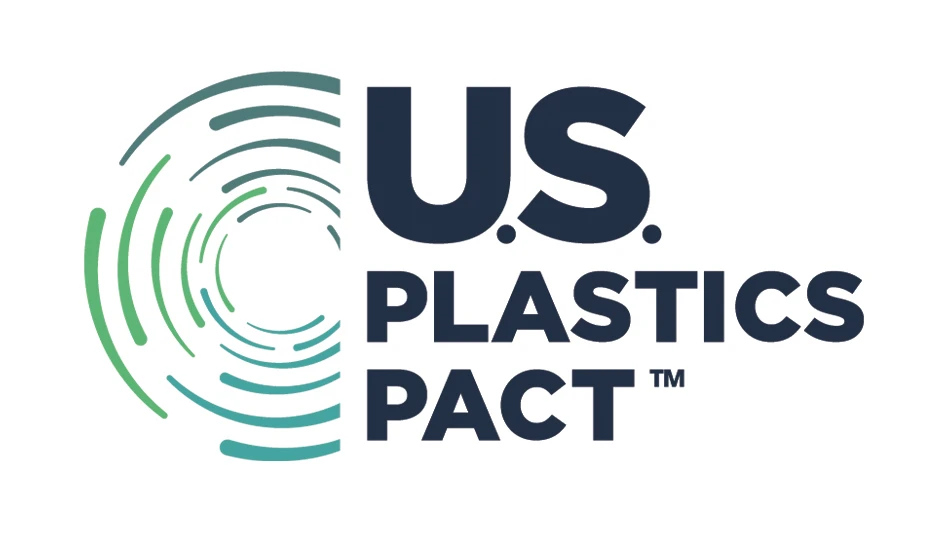
Manufacturers of consumer packaged goods are under increased pressure to create sustainable packaging solutions. Now more than ever, shoppers want products that are made from 100-percent-recycled materials and/or are highly recyclable. This is driving brands to find new ways to deliver on that promise to their valued customers.
Over the past several years, plastic products have received significant consumer backlash. Pictures of floating “islands” of plastic waste off the coast of China have contributed to the public’s negative perception of plastics. These sobering images have led many to believe plastic is not a viable option in support of a circular economy.
However, when used responsibly, plastic packaging can lead to reduced pollution and lower energy usage compared with other forms of packaging.
Understanding what motivates consumers at the point of sale helps drive advancements in sustainable design. Achieving this means having “boots on the ground” to help identify market trends. One solution is to develop a mobile app that serves as a crowdsourcing tool for innovation. Unleashing a company’s global employee network to upload images of packaging during the course of their everyday lives can help to accelerate a plastic manufacturer’s innovation process.
Designing for recyclability
In response to consumer demand, companies are seeking new ways to increase the amount of recycled content in their products. Partnering with plastics manufacturers helps to ensure the highest levels of recyclability are achieved without sacrificing brand identity.
A package designer is viewed as a problem solver rather than simply as a designer of plastic packaging. Design teams have become “shape sleuths” who investigate the best creative solutions possible for any given project. Engaging brands in live design sessions gives companies the opportunity to work directly with the creative team using a combination of art, communication, engineering, technology and manufacturing in the development of custom packaging solutions.
Obtaining recycled content
Today, many shoppers feel a personal responsibility to prevent plastics from negatively affecting the environment. This conviction leads consumers to find products that are recyclable or made from recycled materials.
However, to make packaging that can truly claim it’s made from recycled materials, manufacturers need access to large volumes of recycled content—particularly for use in food-grade packaging. This can be difficult to find when much of the plastic produced today ends up in landfills. Since the plastic boom began in the 1940s, approximately 79 percent of this material has made its way into the natural environment or landfills, while a meager 9 percent has been recycled, according to a study published in the journal Science Advances in 2018.
Many barriers to recycling are commonly cited:
- inconsistent collection and recycling efforts along the entire value chain;
- misinformation about effective methods for preventing pollution;
- lack of consumer understanding of what is recyclable and how to recycle it; and
- little or no access to recycling and waste collection.
However, things are improving. The U.S. recycling rate for postconsumer plastics increased by 27 percent between the early 1980s through 2015. Additionally, the recycling rates for some plastics are higher than others. For instance, the rates for polyethylene terephthalate and high-density polyethylene, two of the most easily recycled plastics, are approximately 30 percent.
As consumer recycling rates climb, so does the amount of recycled content available to manufacturers to use in producing new products.
Seeking alternative resources
In light of limited access to postconsumer plastics recycling, manufacturers like Graham Packaging, Lancaster, Pennsylvania, are turning to alternative streams, including postindustrial recycling. This plastic scrap is generated from the original manufacturing process and then reused in the same material. Postindustrial recycling often requires less energy to convert material into new, usable packaging.
Postindustrial recycling occurs in several ways in a plastic packaging plant. First, rejected parts come from the production line’s quality control units during leak tests or other inspections. Bottles found to be out of tolerance or defective are ground and reintroduced into the manufacturing loop.
_fmt.png)
Material also can be generated at manufacturing filling sites. This material requires the same processing as curbside-collected packaging. However, because the package did not reach its intended customer distribution channel, it’s considered postindustrial scrap.
In addition to postindustrial material, companies are looking to secure ocean-bound plastics to be used in manufacturing. These bottles that were initially headed for the ocean are being rescued and recycled into household and automotive products, with the ultimate goal of being used in other markets, including food and beverage packaging.
Using biodegradable resins
Biodegradable plastics are made from all-natural plant materials, such as corn oil, orange peels, starches and plants. Biodegradable plastics typically take three to six months to decompose fully. Exactly how long a biodegradable bottle takes to break down depends on various factors, such as temperature and the amount of moisture present.
Plastic manufacturers are seeking biobased resins and biodegradable resins for use in products. Several years ago, a resin made of sugar cane was used in a large-scale production run of about 3 million bottles.
While this biobased resin is now widely used in the industry, additional research is needed on the cost and viability of other plant-based resins to ensure truly sustainable solutions.
New angle on blow molding
Currently, most extrusion blow-molded plastic bottles and containers are formed through horizontal profile programming, which maintains product integrity and load-bearing properties. A new technology is redefining the blow-molding process in an effort to significantly reduce the amount of plastic resin required per bottle.
Graham Packaging’s vertically applied processing (VAP) involves extrusion blow molding with vertical bands that can be adjusted to increase or decrease the wall thickness in desired locations. These vertical bands of added material can be “turned off” in areas where it may cause distortion during postmold shrinkage. This technology also allows material distribution to be targeted exactly where it’s needed for structural purposes and can be reduced where it is not needed, too.
For example, a bottle typically requires a thick horizontal band of material at its base to ensure adequate load-bearing qualities. VAP allows the container to be reinforced only at the corners where structural integrity must be maintained. Through test models, VAP technology has been proven to reduce the amount of plastic for each container by up to 10 percent to support a sustainable, cost-effective solution.
Recyclable pigmented packaging
In the past, black plastic packaging materials were a challenge to recycle because they couldn’t be properly identified and sorted by optical sensors. Manufacturers are developing unique ways to combat this by creating bottles that offer the benefit of opacity found in a traditional carbon-black bottle while allowing the bottle to be detected in recycling streams.
The unique design offers the same opaque appearance as carbon-black containers but can be recycled because of its three-layer structure, including noncarbon black with black opacity. This contributes to fewer bottles in landfills, where colored bottles often can end up. Companies can now keep their packaging “on brand” while contributing to a sustainable environment.
Encouraging reuse with texture
Because cosmetic issues are the primary reason most reusable bottles are rejected, companies are exploring ways to cut down on their “used” appearance. A bottle could be rejected for several reasons, but the most common is scuffing on the exterior, which lowers its shelf appeal.
New technology incorporates texture that takes on the appearance of bubbles while helping to eliminate scratches and scuffs on areas of the bottle where they commonly occur. On average, these textured bottles are reused 17 times and are designed to be reused up to 25 times. When tested, these bottles showed 75 percent less scuffing than nontextured bottles.
Sustainable mission
In addition to enhanced recyclability, plastic continues to be a sustainable option in packaging because its light weight compared with other materials can reduce carbon emissions during transportation.
Sustainability should not be viewed as a trend but as a mission-critical part of every business. It should be an integrated part of every brand’s strategy throughout a product’s life cycle.
The key to increasing recyclability is to build strategic partnerships with brands that help to meet and exceed their sustainability commitments while exploring additional opportunities to educate consumers around recyclability.

Explore the Summer 2020 Plastics Recycling Issue
Check out more from this issue and find your next story to read.
Latest from Recycling Today
- PCA reports profitable Q1
- British Steel mill subject of UK government intervention
- NRC seeks speakers for October event
- LME identifies Hong Kong warehouses
- Greenville, Mississippi, launches aluminum can recycling program
- Cotton Lives On kicks off 2025 recycling activities
- Georgia-Pacific names president of corrugated business
- Sev.en Global Investments completes acquisitions of Celsa Steel UK, Celsa Nordic






